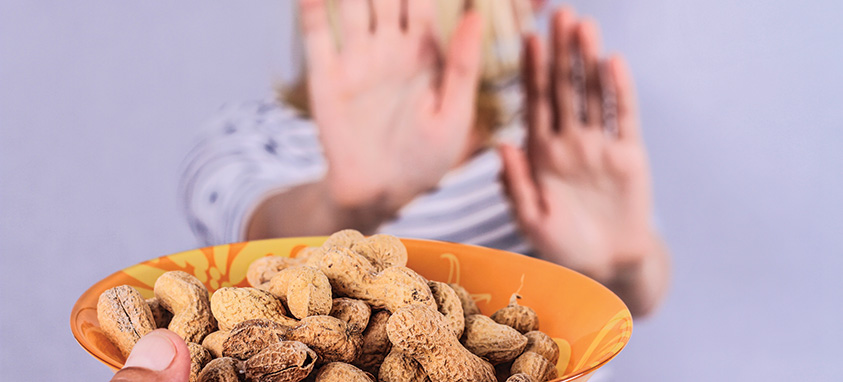To allow or not allow, that is the question
Aah-aah-choo! You never want to be the person—or be near the person—who’s sneezing on a plane. Much of the sneezing is due to allergies, which can be far more serious than a tickle in the nose. Some passengers risk going into anaphylactic shock when coming into contact with certain allergens, such as foods and animals they have a potentially fatal sensitivity to.
Dr. Michael Blaiss, executive medical director of American College of Allergy, Asthma and Immunology, breaks down how travelers can prepare themselves and dispels common myths on the topic.
Peanuts
One of the most frequent food allergies is to peanuts, causing several airlines to revise policies and in-flight food offerings, to varying degrees. According to U.S. Food & Drug Administration, peanuts are one of eight foods that account for 90 percent of allergic reactions.
Last summer, Southwest, long synonymous with peanuts, announced it would discontinue providing this snack to appease and protect allergic passengers and crew. Disappointed passengers responded that peanuts are a reliable option for those with celiac disease and gluten sensitivity. Travelers are not prohibited from BYO peanuts, though.
People with a peanut allergy should also bring their own food to be certain that what they are eating has not accidentally been contaminated with the nut. Read labels very carefully. To further take responsibility for your health, inform the airline of your concern at least 24 to 48 hours ahead of time so it can make necessary accommodations. Some carriers will create a multiple row buffer zone around those with peanut allergies and fellow passengers who plan to consume peanuts while traveling.
“In general, people have been concerned about peanut dust in the air,” Blaiss says. “There are no reports of someone having a life-threatening reaction to peanut dust in the air. The smell of peanuts doesn’t cause an allergic reaction: You’ve got to ingest it. Touching it or just being near it won’t cause a life-threatening reaction.”
Another way to avoid a problem is to request to board the flight early so that you have enough time to wipe down the seat and tray table. “The other thing I tell patients that are really scared….is to take that first flight in the morning, because they do clean the planes overnight,” Blaiss says. “That’s probably going to be the least chance of exposure.”
Animals
In recent years, airlines have seen a large increase in passengers bringing dogs, cats and Noah’s Ark on board for emotional support. Carriers have also cracked down on this, prohibiting certain types of animals altogether. However, four-legged friends who provide a legitimate service for a passenger who is disabled or has special needs can still fly.
Animal allergies are a concern for some passengers. “Animal dander does fly in the air,” Blaiss says. “Cat dander flies in the air and sticks to things. It stays on the plane.”
Blaiss says passengers can experience a severe flare-up on flights, so he suggests having a rescue inhaler at the ready and, again, wiping the seat and tray to remove as much dander as possible. Call the airline ahead of time to ask if a pet is booked on the plane. If you’re concerned, request an alternate flight, if available. Once on board, see if a flight attendant can re-seat you as far away as possible from the animal. Blaiss also alerts passengers that the blankets and pillows handed out on planes can harbor animal allergens. You might want to bring your own pillow from home.
Prepare for Takeoff
If you take only one thing away from this lesson, it’s to be accountable for your needs and be prepared. Travel with an auto-injector of epinephrine, especially if you are prone to allergic reactions. You can never be too cautious. There have been reports of passengers suffering from their first-ever allergy attack mid-flight. Since they were unaware of their allergy, they did not travel with medication, and sadly, suffered fatalities.
Know how to administer your own EpiPen, but in the event your allergic reaction is too severe to do this yourself, rely on a physician, nurse or EMT on board who can jump in to help. Keep your medication at your seat so you always have easy access to it. Do not put it in checked luggage or the overhead bin.




